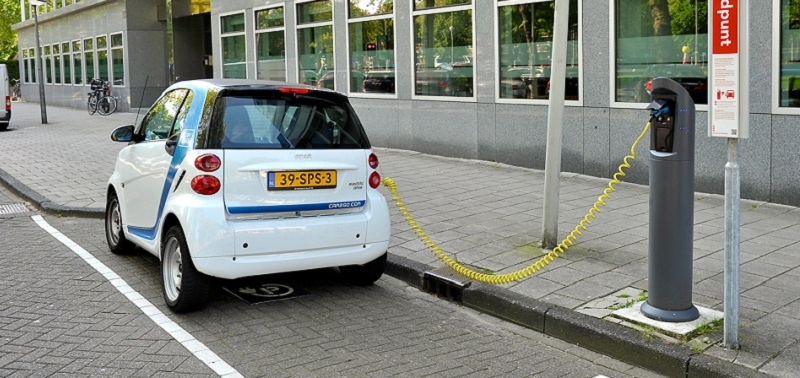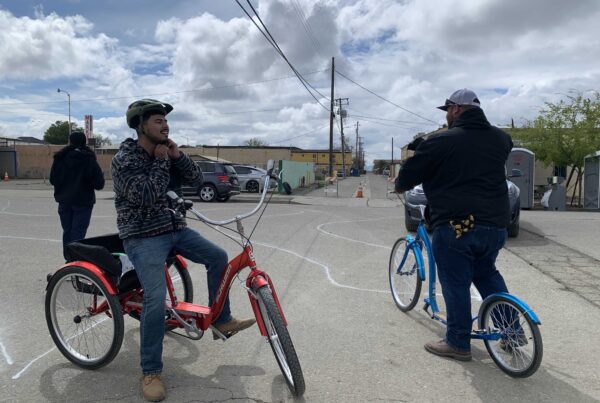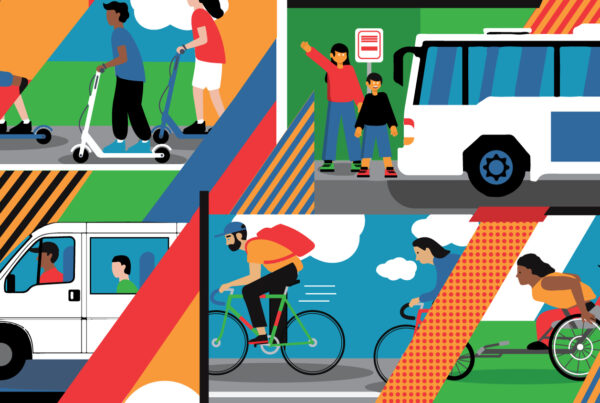French entrepreneur Vincent Bollore announced recently that he is eyeing Los Angeles as the next market in which to expand his company’s electric, point-to-point carsharing service. Bollore’s company BlueSolutions launched its flagship program, Autolib, in Paris in December 2011 and is planning to debut carsharing systems in London and Indianapolis later this year.
This past summer, Car2Go – which providers point-to-point carsharing and offers electric vehicles in some markets, such as Portland and San Diego – launched in half a dozen cities in the LA area including Hermosa Beach, Redondo Beach and El Segundo, giving it a jumpstart on the market.
Does this all mean LA is destined to be the next electric carsharing hot spot? While every city has its own unique challenges and opportunities, here are five reasons we think LA and electric carsharing would make a great team:
- The Need is There
Air pollution continues to be a major issue in Southern California. In 2014, LA again topped the American Lung Association’s list of the cities with the worst smog in the nation, violating federal health standards for ozone an average of 122 days a year. One of the biggest sources of ozone pollutants is emissions from the many vehicles clogging the region’s roadways (LA also has one of the highest vehicle ownership rates per capita).
What better tool than carsharing – which has been shown to reduce car ownership and vehicle miles traveled (VMT) – to address the problem? While more research needs to be done on point-to-point carsharing, studies suggest that one traditional carshare car takes between 9 and 13 cars off the road, helping to cut both congestion and greenhouse gas emissions. And, in the case of electric carsharing, those cars would be replaced by low-emission EVs.
- The Clock is Ticking
Regulation passed by the California Air Resources Board mandates the state to reduce its greenhouse gas emissions to 1990 levels by 2020. Additional goals after 2020 are likely. The state needs proven solutions that cut emissions and deliver a good return on their investment. If Bollore, Car2Go or another operator can make their case, this could be the beginning of a beautiful friendship.
- You Can Plug In
As a state, California is home to more than 1,800 public electric-vehicle charging stations, or 21.6 percent of the 8,514 in use nationwide, according to the US EPA. In London, BlueSolutions is getting a jump start by tapping into the city’s existing 1,400 public charging stations as part of its launch. The company could take the same approach in SoCal, although it’s important to note that LA isn’t as far along in building out infrastructure as other California cities such as San Diego.
While LA has expressed a desire to become a leader in electric vehicles, the city would have to make a significant commitment to EV infrastructure to make electric carsharing work for a company like Bollore or Car2Go.
- The Community Is Ready
The launch of Indianapolis’ BlueIndy program has been delayed in part because arrangements had to be ironed out with the local utility, Indiana Power & Light, which had been tasked with installing 1,000 vehicle charging stations for the system. The utility’s request to bill ratepayers for the $16 million in costs associated with installation prompted a backlash from some local lawmakers and was recently denied.
The chances of such turmoil are lower in SoCal, where the local municipal utility has helped to lead the charge on promoting electrical vehicle use. The Southern California Regional Plug-In Electric Vehicle Plan (SoCal EV) has also laid a lot of groundwork to foster collaboration among southern California utilities, governments, businesses and other stakeholders in support of EV deployment. Providers like Bollore and Car2Go could tap into this network to build out the capacity needed to serve their members.
In addition, a number of public funding sources – such as the California Air Resources Board’s Pilot Program for Car Sharing in Disadvantaged Communities and the City of LA’s Integrated Mobility Hub project – will reward operators who are willing to invest in the neighborhoods that often get shortchanged by new infrastructure investments.
- The Time is Right
Carsharing has historically had a much smaller presence in LA compared with other U.S. cities. For instance, it’s estimated that LA is home to between 200-300 carshare cars compared to around 2,000 in San Francisco, which is about one-tenth the size of the City of LA in area and in population.
That’s changing, as providers such as Zipcar and Car2Go enter and expand their presence in the region. LA is also in the process of soliciting proposals for a new bikeshare program to launch in 2016, and reinvesting and reinvigorating public transit and its urban core. The momentum is building, making this the right time for electric carsharing providers to turn their attention to LA.
To learn more about all of the latest trends in bike, car and ridesharing, be sure to join us in LA on February 23 at the Live Ride Share conference. Register today to save your seat!
Additionally, the Shared-Use Mobility Center will be working with LA and more than 20 cities across the nation in the coming year to track create new tools – including a policy database, interactive map and transportation gap analysis – to help cities better gauge and grow shared mobility services. We are also contributing our previous experience as carshare operators to help design a carsharing pilot that can successfully work in low-income areas of the region.
We will have more information on those projects to share soon. In the meantime, we hope you can join us in LA!



